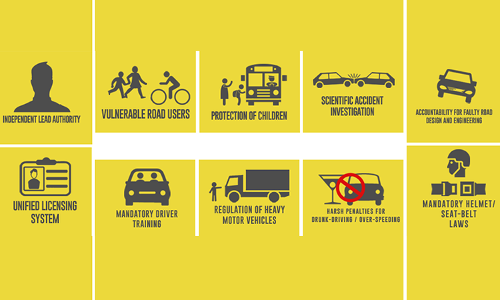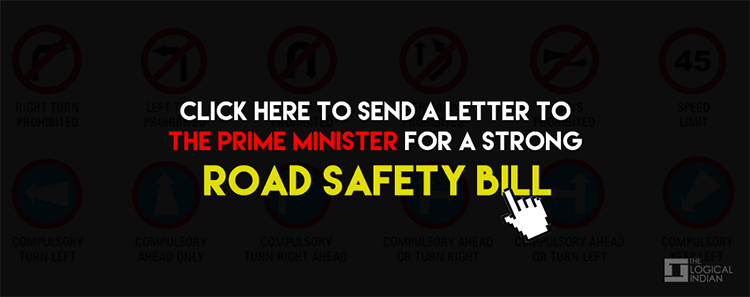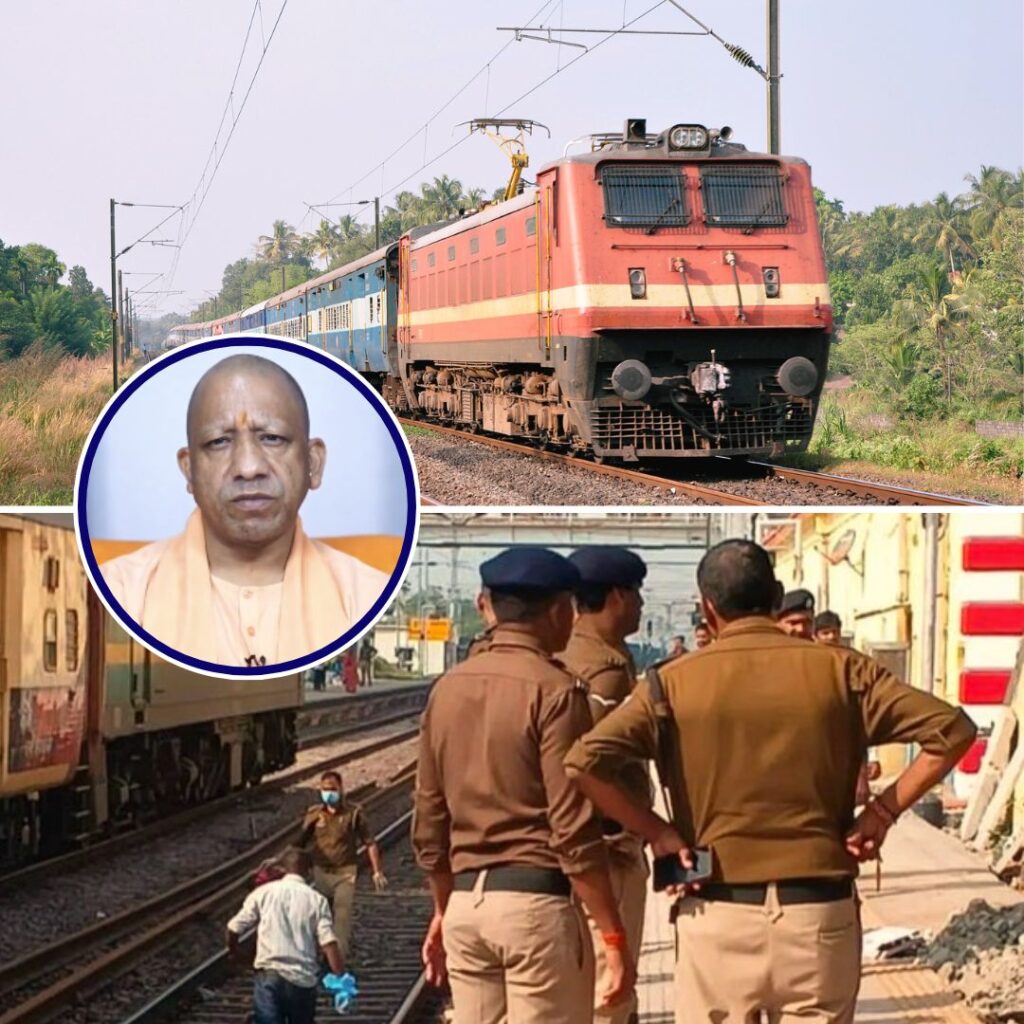What do the Government of India’s most ambitious schemes, the Swaccha Bharat Abhiyan, the Food Security Act, and the 100 Smart Cities project have in common with road accidents? Not much, except that preventing road accidents in India will fund these schemes four times over each year. According to a 2014 report by the erstwhile Planning Commission of India, the annual economic loss due to road accidents amounts to 3% of India’s GDP, or Rs. 3.8 Lakh Crore at 2013-14 estimates. The combined annual budget of the three recently announced schemes is Rs. 88,000 Crore. The math is clear, but is there a solution in sight? Yes, but it requires an iron-strong political will at the highest levels.
On June 3rd, 2014, barely a week after Shri Narendra Modi took oath as the Prime Minister of India, his cabinet colleague and Union Minister for Rural Development, Shri Gopinath Munde was killed in a road accident in Delhi. His death sparked a major debate on road safety in India. Horrifying facts, such as a million road accident deaths in the past decade and one every four minutes came to light, prompting TV debates and opinion pieces in the press.
The solution, though seemingly cliched, emerged rapidly. India does not have an overarching legal framework under which the root causes of road accidents can be addressed. The existing law is fractured. It has failed to provide protection to the most vulnerable road users; there are no minimum safety standards for road construction or vehicle manufacturing; and penalties are barely a deterrent. Moreover, there are multiple actors involved in ensuring safer roads – RTOs, Police, municipalities, PWDs, NHAI and Health departments – and there is no existing framework under which they can be made to work together cohesively, and monitored.
It took little time for the Government of India to acknowledge the need for this solution, and Transport Minister Shri Nitin Gadkari announced on June 5th, 2014 that India will get a new road safety law “within one month”. The timeline didn’t seem very ambitious at that moment, not only because specific recommendations to upgrade road safety laws already existed, but also because it was the death of a Cabinet Minister of India that had brought the reality of India’s roads to the fore. Mr. Munde’s death, though highly unfortunate and untimely, had created a light at the end of the tunnel – an opportunity to save lakhs of lives over the next decade.
A year has passed since the demise of Shri Munde but the new road safety law is no where in sight, and the light at the end of the tunnel is fast diminishing. While delays are understandable to some extent as any such exercise will involve multiple stakeholders, but what is most concerning is the significant dilution of the proposed Bill over various successive drafts in the past several months. Statutes to hold auto manufacturers, transporters, road contractors and rash drivers accountable have been watered-down significantly; the independence and powers of the proposed road safety regulator too have been curtailed; penalties for life-threatening offences such as jumping a traffic light and over-speeding have been reduced to levels as low as those currently in place; and now there is a suggestion to push most road safety aspects out of the proposed Act and into the rules, effectively taking away the force of law from these statutes. One wonders, what is going on. When will the safety of road users be taken seriously by the political executive?
There is some hope though and the source is our Prime Minister. The PM can order a complete review of the Bill and ensure that it is fixed and introduced expeditiously. He has demonstrated strong political will for a Swaccha Bharat (Clean India) and there is no reason he will not do so for a “Durghatna-mukt Bharat” (Accident-free India) as well. Public campaigns to draw his attention have already begun. Road safety activists representing scores of affected families from across the country have launched the “Road Safety at Risk” campaign. The campaign website, www.roadsafetyatrisk.in, allows users to send a letter to the Prime Minister requesting his intervention in ensuring a strong road safety law.
Hopefully the voices of the people of India will reach the PM and he will act to honour the death of Shri Gopinath Munde and lakhs of other fellow Indians snatched away by road accidents. Certainly, that will also give him the economic means to ensure a cleaner, smarter and well-fed India.
Click here or on the image below to join the campaign by The Logical Indian in association with SaveLIFE Foundation and send a letter to the Prime Minister for a strong road safety bill.













